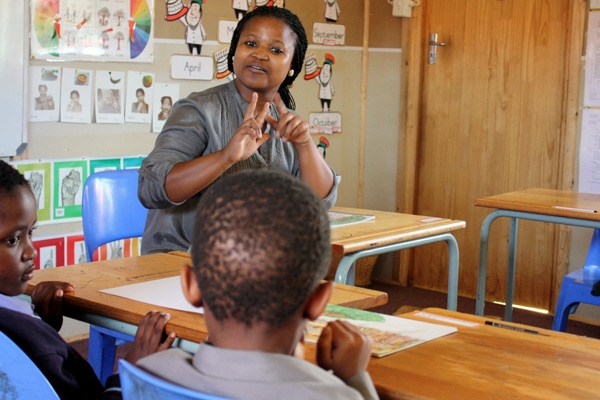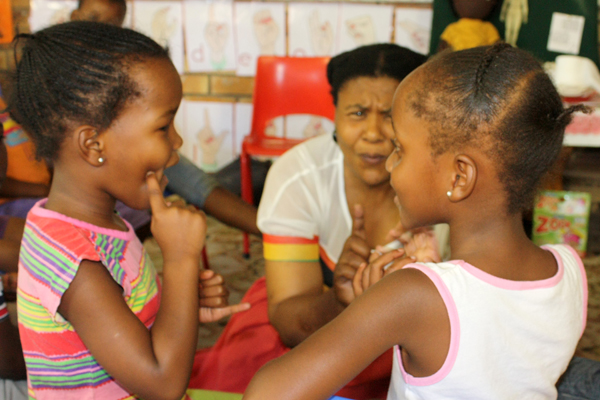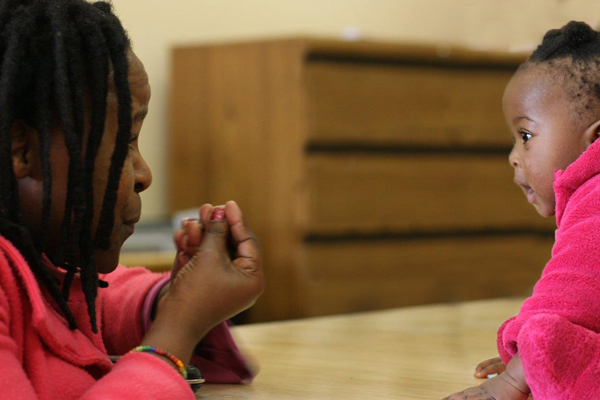The state of South African Sign Language

The last full week of September, which is Deaf Awareness Month, is the International Week of the Deaf. This year the theme is ‘Strengthening Human Diversity’.
“We don’t see deafness as a disability,” explains Cara Loening, director of Sign Language Education and Development (SLED). “We embrace it as a new language and culture that has been brought into our lives.”
SLED started 14 years ago to facilitate the literacy and learning of the deaf child through the promotion of South African Sign Language (SASL). With access to SASL, there is no reason for a deaf child not to achieve exactly the same as a child with hearing child, explains Kirsty Maclons, head of deaf education and sign language at SLED.
Too often deaf children leave school still unable to read and write.
SLED initially focused on training teachers how to bridge from SASL to written English. But most teachers of the deaf were not able to use SASL, and instead used a kind of Fanagolo. They mix the rules and grammar of one language (English) with that of another (SASL) and can end up confusing the child further.
So SLED started to train teachers in SASL first, and then in how to use SASL to bridge to written English.
Leigh McDonald from SLED was born deaf to hearing parents (as is most commonly the case). Her parents wanted her to get a cochlea implant.
“My brother and I are both deaf,” she explains. “We had hearing aids and we were forced to speak”.
“Unfortunately for most parents when a child is born deaf it becomes a medical thing, a question of how can you fix something that is broken,” says Loening.
In Sweden, unlike South Africa, the family and extended family of the deaf child are legally obliged to learn sign language.
McDonald was initially taught orally (where deaf students are taught to speak and not use any signing). She was then exposed to Total Communication (using speech and some kind of signing simultaneously). But it was only in high school that she was fortunate enough to study her language for the first time through a deaf teacher who worked at the school.
“I was born deaf and my mother said that it was a gift from God,” explains sign language facilitator at SLED, Nombuyekezo Mathidala. “I had a sister who was really close to me and she learned a little bit of SASL from me, but my mother was only interested in learning the fingerspelling alphabet.”
Things were slightly easier for Zoliswa Flekisi, also a sign language facilitator. “My family accepted that I was deaf … they found a school that matched my needs.” At home after school, she would proudly stand in front of everybody and sign away. “I would pray: ‘Our Father who art in Heaven’ and everybody would be really impressed at what I was doing.”

Zoliswa Flekisi teaching sign language. Photo provided by SLED.
Currently, at most schools for the deaf, in the foundation phase there is a hearing teacher (not usually qualified in sign language) and a deaf teacher assistant. As the two do not prepare the lessons together, there is no sharing of knowledge and no understanding, says Loening. For example, if the hearing teacher writes the word “kind” on the black board and asks the deaf teacher assistant to interpret this word, there are various meanings that could be interpreted and therefore room for confusion.
At colleges or universities, the hearing lecturers rely on the interpreters for everything. In South Africa, there is a severe shortage of trained, qualified interpreters and there isn’t an established body focusing on interpreter training, says Loening.
To become an interpreter takes many years and requires a strong knowledge of the language as well as further education in the subject being interpreted. This is particularly important for university, court and community interpreting.
A huge skill that is lacking in interpreters is that of using spoken language to accurately reflect the deaf person, and not just use simple English, says Loening. “The general public thinks that the interpreter is just there for the deaf person to understand me, and they forget that it goes the direction as well.”

Teacher asking: “Do you want something?”. Photo provided by SLED.
Not enough research has been done on SASL. Initial research indicated that there were nine different South African signed languages, which isn’t true, according to Maclons. Sign language has very little in common structurally with any spoken language, she says.
“SASL is quite unique and there are lots of dialects usually focused around the different schools for the deaf,” she explains.
Under apartheid there were white schools and black schools for the deaf. Once the schools became more racially integrated, there was a lot more interaction and excitement around learning other dialects. “It was almost like when a child starts learning new words, that kind of excitement.”
Deaf people don’t have a problem with different dialects. “We are one huge community and there is an interest in the various dialects and being able to understand each other,” says Flekisi.
Flekisi taught at Noluthando School for the Deaf in Khayelitsha for 20 years. “It’s through facial expression, body language and similar grammatical structure that we are able to share and understand.”
“It would be terrible if we didn’t have variety and dialect in South African Sign Language.… it adds to the richness,” explains Maclons. The beauty of languages is that they grow, they’re flexible and they change.
Current developments
On 13 August, Minister Angie Motshekga approved the Curriculum and Assessment Policy Statements for SASL Grade R to Grade 12 at Home Language level.
“Now for the first time deaf children are going to be given the opportunity to study South African Sign Language as a Home Language subject, just like an English speaker studies English,” explains Maclons.
The curriculum is to be rolled out in 2015 at South African schools for the deaf, focusing on the foundation phase and bridging Grade Nine so that they can start studying until Grade 12.
But the Department of Education is not ready for this roll out, explains Loening. The curriculum is there, but the main issue is the lack of specialists in SASL. There are very few qualified deaf teachers and first language SASL users.
Support independent journalism
Donate using Payfast

Don't miss out on the latest news
We respect your privacy, and promise we won't spam you.

This article is licensed under a Creative Commons Attribution-NoDerivatives 4.0 International License.
